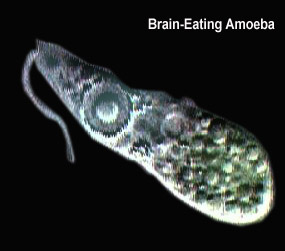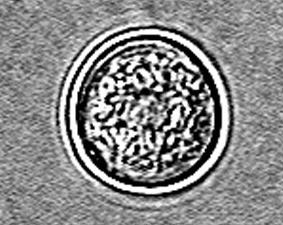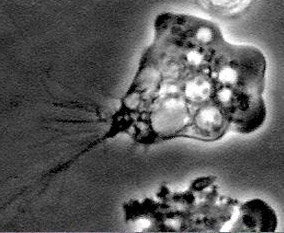Invasion Of The Body Snatchers
by Mol Smith Dec. 2013
Our youngsters have never had a better time for being entertained by movies which fictitiously generates futuristic dystopian worlds of vampires and zombies, or mass-extinction through air-born viruses. Often the vampires and zombies are created due to an infection. I thought it might be interesting to consider some of the real invaders of micro-organic forms, and the way they may invade our bodies in exotic ways.
Most people are aware of Malaria, and the vector (carrying, spreading-agent) for that being the mosquito. But what about so many others?
|
Brain-eating Amoeba |
Naegleria fowleri: what the media call 'The Brain-Eating Amoeba'. A brilliant and evocative name, yes? This little critter is absolutely deadly. Fortunately, it likes warm fresh water to thrive, but can survive at lower temperatures (less likely to be an infection issue), in soil, warm springs, and actually in distilled water if it is introduced to it. |
||
|
This amoeba can exist in different forms. When water is lacking, it can encyst through the process of desiccation hot springs and other geothermal water sources, thermally polluted water, such as runoff from power plants, fresh water aquariums, soil, including indoor dust. |
|
||
|
Putting any form of water under pressure up your nose without first sterilising it (boiling and cooling) first is not a good idea because of the lack of brain-external environment protection at the root of the nose. Many other toxins can be inhaled and cause brain tissue damage: spray-type insecticides for example! |
|||
Trypanosoma cruzi
will steal your heart
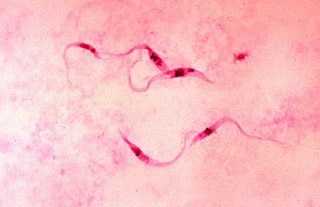
Photo Credit: ContentProviders(s): CDC/Dr. Myron G. Schultz. PD-USGov-HHS-CDC. This image is in the public domain and thus free of any copyright restrictions. Used here under the Wiki Creative Commons licence.
More (copyrighted) images via this external link
Gross anatomy of a heart that has been damaged by chronic Chagas disease.
Trypanosoma cruzi may take 10 to 20 years to steal your soul (or more correctly - your heart) but it will in the end if you don't know you have it. This micro-organism is transmitted by that little bug on the right:- a member of Triatominae and a subfamily of Reduviidae, also known as conenose bugs, kissing bugs, assassin bugs, or triatomines. They feed on blood, often
yours!
Mostly confined to South America with a few species present in Asia, Africa, and Australia, they can carry the Trypanosoma cruzi. The triatomine bug takes a blood meal you and often defecates. If trypomastigotes are in the feces they swim into the host's cells using flagella, a characteristic swimming tail dominant in many protozoan stages. Once inside your body, and in a cell, they become amastigotes - a reproductive stage.
The condition of being infected by the protozoan is called Chagas disease after its discoverer Carlos Chagas of the Instituto Oswaldo Cruz.
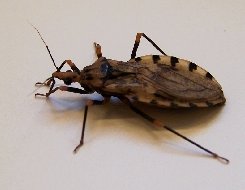
Panstrongylus geniculatus by: Fernando Otálora Luna.Montebello, Amalfi Municipality, Departmento de Antioquia, Colombia (6°55’58’’N; 75°05’30’’ W, 18-24 °C). Licenced under Wiki Creative Commons Licence.
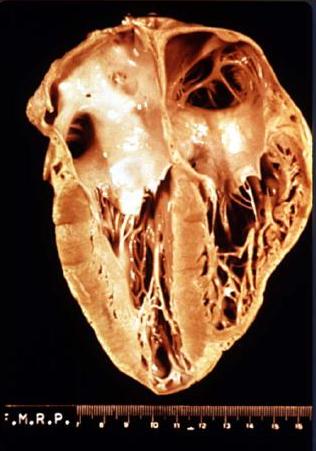
source: CDC cdc.gov/pub/infectious_diseases/
Used here under Wiki creative commons licence.
If left untreated about 20–40% of infected individuals will still eventually develop
life-threatening heart and digestive system disorders. The currently available
antiparasitic treatments for Chagas disease are benznidazole and nifurtimox, which can cause temporary side effects
in many patients including skin disorders, brain toxicity, and digestive system
irritation but any treatment is only effective during the early stage of the infection.
FAQ:
Can I get this without being bitten?
Yes. It can be transferred by contaminated blood transfusion, from an infected mother to her foetus, through breast feeding (if the mother is infected). Although rare, it can also enter the digestive system through contaminated fruit juice and food.
Can I get this if I live in Europe?
Yes. Mostly due to increasing number of immigrants into Europe from South America. If they are carrying the protozoa, they are infected, and it comes with them.
Medical Perspective
Recent estimates from the World Health Organization indicate that 18 million
persons are chronically infected with Trypanosoma cruzi and 200 000
new cases occur each year. No drugs or vaccines for preventing infection are currently available. There are two approaches to therapy, both of which can be life saving: antiparasitic treatment, to kill the parasite; and symptomatic treatment, to manage the symptoms and signs of infection. Antiparasitic treatment is most effective early in the course of infection but is not limited to cases in the acute phase.
